«previous pageGENERAL DESIGN CATEGORY
Living With Floods
Shih-Yeu Hou, Student Affiliate ASLA; Chen-Wei Wu, Student Affiliate ASLA;
I-Chun Chien, Student Affiliate ASLA; Jheng-Ru Li, Student Affiliate ASLA, and
Shih-Chia Chiu, Student Affiliate ASLA
Chinese Culture University, Taipei, Taiwan
faculty advisors: Shiau-Yun Lu and Shian-Po Liao
Project Statement
"Fighting with Water" is a proverb for the past hundreds of years. It reveals human's fear of nature. High embankments are built to provide people the feeling of safety. Taipei City, the capital of Taiwan, is now encircled by concretes. Along with the weather change globally, it's critical to rethink the living philosophy toward nature. This project proposes the concept of "living with floods" and returns the flood plain to river. It's a challenge to a dense city, especially the capital.
Project Narrative
Project Location, Scope and Size
The site, Guando plain and She-Zih Island, composes a 823-hectar waterfront space to Taipei metropolitan, which is sited on the estuary of two major rivers, Dan-Shui River and Keelung River, running through the city. From the geographic points of view, Taipei basin is surrounded by mountains, and the project site is located just on the outlet for floods. Thus, the Guando Plain and She-Zih Island face the challenge of flood since historical record and form the last agricultural and low density residential area in Taipei City. Due to the high development in Taipei, the city government is reviewing the zoning plan and flooding prevention plan currently. From the 200-year flood prevention plan, concrete embankments with 9 meters height are proposed to surround She-Zih Island and the southern edge of Guando Plain.
Site and Context Investigation
Guando Plain and She-Zih Island are alluvial wetland created by Dan-Shui River and Keelung River naturally. During 1950s, highly growth in agriculture and industry caused various environmental issues, such as waste dumping, pollution, severe land subsidence due to unregulated pumping for underground water. Guando Plain and She-Zih Island turned into a problematic area for Taipei City. From 1960s, the Taiwanese Government has declared that Taipei City needs strategy on flood prevention. The strategy was constructing the high concrete walls all around the city. Not only the city but people living inside were encircled by higher and higher embankments from then. Although the government strongly relies on concrete constructions as the only solution for flood, water still finds its way out and creates even serious disaster to the city. Even more, the barrier created by these embankments not only fragmentize the natural environment, but also separates people from water and decrease human awareness and appreciation of nature.
Design Program and Intent
In Asia , there is a proverb said "Savage Flood". But in fact, we believe the flood is not a savage, but a transformation process of natural evolution. We have realized the fact that control and manage flood by traditional engineer technique has its limit. It is not absolutely necessary to have flood walls restrict the water flow into our development spaces. Therefore, we attempted many design approach to emphasis the relationship of water and people and shorten the physical and mental distance between them. Also, based on the existing flooding conditions, we proposed several strategies to deal with the water which are essential and need to be improved.
1. Zoning Strategies
Returning the flood plain to its natural function is the main concept of this project. Through land suitability analysis, maps of hydrology, environmental sensitive areas, natural habitats, critical natural corridors etc. are overlapping to identify the preservation areas for nature and build areas for people. In the build areas, constructions are designed for environment friendly, and merged into landscape. Concentrated settlement and zoning strategies are used in this project to prevent sprawl. In this proposed project, embankments are moved out in She-zih Island and relocated in Guandu Plain. Enough space for 200 years flood is preserved in various natural forms.
2. Water Issues
We proposed an alternative embankment layout on Guandu Plain and She-zih Island, because the existing embankments are built along the water edge of the site, however, we think the embankments along She-zih Island should be removed. By using grading technique, we can define and preserve space for water and accommodate floods. On the other side, we relocated the embankment to allow enough setbacks where the flood control is proceeded by natural process in Guandu Plain. The proposed embankments sloped gently and integrated into the overall landscape to minimize the visual impact.
3. Open Space Strategies
Based on existing demand of detention volume, grading and landform design were implemented to shape the space. Many vernal pools and wetlands were created, which are used to store the storm water. In addition, we proposed to re-establish the eco-system by using ecological engineering technique which will recover the wetland resources that was destroyed by existing concrete embankment. The whole site is proposed as a hydrological system and will begin its succession naturally.
4. Circulation
We proposed to relocate the main circulation of Guandu Plain and She-zih Island to seam the existing defragmented spaces by the traffics. The new circulation system will integrate the arterial roads for both side of the developments and provide collectors to connect and manage local traffic. Preserve more spaces for ecology were expected.
5. Building Prototypes
Because of the unique sub-tropical climate which is humid and rainy in Taiwan, we believe that the living environment should conform to the nature environment and process. By defining urban design guidelines, we carefully managed the living spaces and provided public corridors at the first and second floor of the building complex. Proposed building prototypes have multiple levels which can absorb the rain water and release afterwards. The buildings can also adapt to the flood condition and increase the public safety and reduce property losses.
This project is proposed for a new living philosophy toward water. Once enough flooding area is returned to nature, we don't need to fight against water. We can learn how to live with water, appreciate water, and enjoy the landscape created by water.
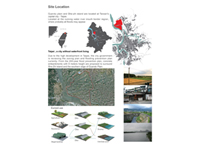
Site Location
(Photo: Li,Jheng-Ru Chiu,Shih-Chia Wu,Chen-Wei Chien,I-Chun Hou,Shih-Yeu)
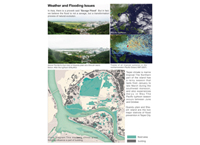
Weather and Flooding Issues. In Asia, there is a proverb said “Savage Flood”. But in fact, we believe the flood is not a savage, but a transformation process of natural evolution.
(Photo: Li,Jheng-Ru Chiu,Shih-Chia Wu,Chen-Wei Chien,I-Chun Hou,Shih-Yeu; Top Right Image Refernces: Top Image: WikiProject Tropical cyclones/using by jdorje/Tracks, Bottom Image: Japan Meterological Agency)
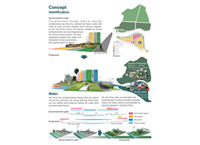
Concept Identification.
(Photo: Li,Jheng-Ru Chiu,Shih-Chia Wu,Chen-Wei Chien,I-Chun Hou,Shih-Yeu)
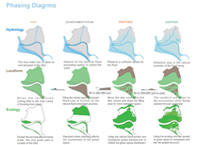
Phasing Diagrams
(Photo: Li,Jheng-Ru Chiu,Shih-Chia Wu,Chen-Wei Chien,I-Chun Hou,Shih-Yeu)
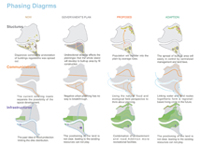
Phasing Diagrams
(Photo: Li,Jheng-Ru Chiu,Shih-Chia Wu,Chen-Wei Chien,I-Chun Hou,Shih-Yeu)
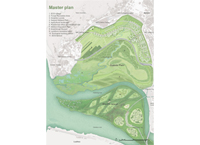
Master Plan
(Photo: Li,Jheng-Ru Chiu,Shih-Chia Wu,Chen-Wei Chien,I-Chun Hou,Shih-Yeu)
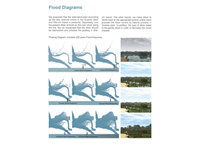
Flood Diagrams
(Photo: Li,Jheng-Ru Chiu,Shih-Chia Wu,Chen-Wei Chien,I-Chun Hou,Shih-Yeu)
"Really basic and really smart! Flooding is an important issue and this deals with it head-on. Nice graphic representations as well. "
— 2009 Student Awards Jury
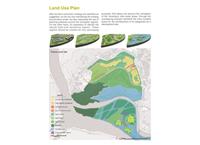
Land Use Plan
(Photo: Li,Jheng-Ru Chiu,Shih-Chia Wu,Chen-Wei Chien,I-Chun Hou,Shih-Yeu)
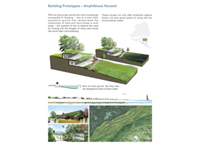
Building Prototypes — Amphibious Housed
(Photo: Li,Jheng-Ru Chiu,Shih-Chia Wu,Chen-Wei Chien,I-Chun Hou,Shih-Yeu)
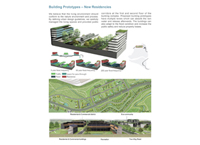
Building Prototypes — New Residencies
(Photo: Li,Jheng-Ru Chiu,Shih-Chia Wu,Chen-Wei Chien,I-Chun Hou,Shih-Yeu)
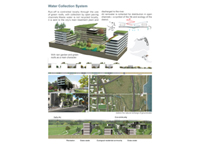
Water Collection System
(Photo: Li,Jheng-Ru Chiu,Shih-Chia Wu,Chen-Wei Chien,I-Chun Hou,Shih-Yeu)
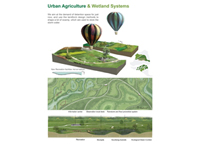
Urban Agriculture & Wetland Systems
(Photo: Li,Jheng-Ru Chiu,Shih-Chia Wu,Chen-Wei Chien,I-Chun Hou,Shih-Yeu)
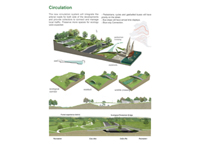
Circulation
(Photo: Li,Jheng-Ru Chiu,Shih-Chia Wu,Chen-Wei Chien,I-Chun Hou,Shih-Yeu)
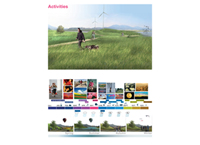
Activities
(Photo: Li,Jheng-Ru Chiu,Shih-Chia Wu,Chen-Wei Chien,I-Chun Hou,Shih-Yeu)
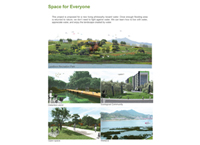
Space for Everyone. This project is proposed for a new living philosophy toward water. Once enough flooding area is returned to nature, we don’t need to fight against water. We can learn how to live with water, appreciate water, and enjoy the landscape created by water.
(Photo: Li,Jheng-Ru Chiu,Shih-Chia Wu,Chen-Wei Chien,I-Chun Hou,Shih-Yeu)



